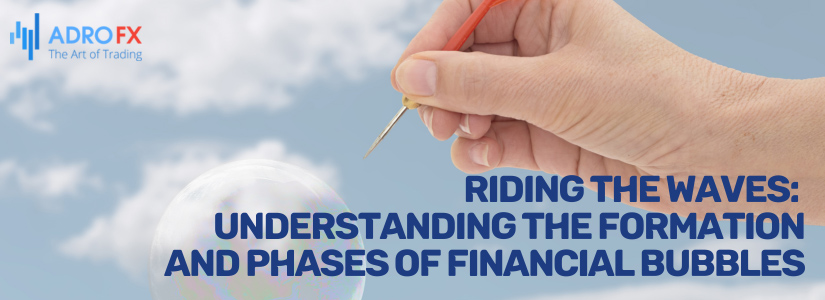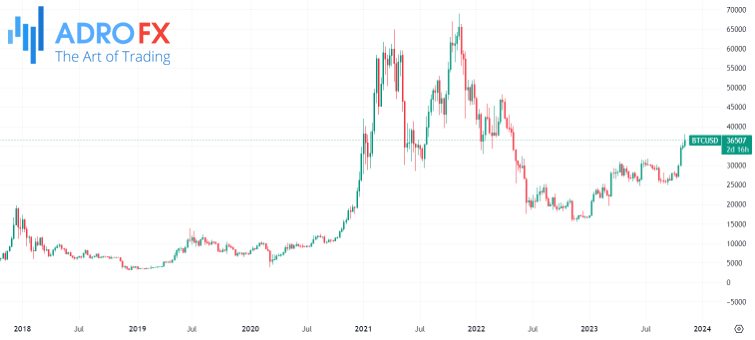Riding the Waves: Understanding the Formation and Phases of Financial Bubbles

Bubbles in the financial world have a certain allure, a siren song that draws in investors with promises of quick riches. Yet, beneath the surface, they often conceal treacherous waters of volatility and, ultimately, financial devastation. Understanding the formation and phases of these speculative bubbles is essential for anyone navigating the complex realm of investments. Analysts have long observed these bubbles, recognizing common patterns that offer valuable insights into their lifecycle. In this article, we delve into the five distinct stages that bubbles typically progress through, shedding light on the telltale signs that investors should watch for. We'll also explore historical examples, from the tulip mania in 17th century Netherlands to the dot-com bubble of the late 1990s, illustrating the risks and consequences of unchecked exuberance.
Understanding the Formation and Phases of Bubbles
Bubbles share common characteristics during their formation, and analysts have traditionally identified five distinct stages that these bubbles progress through:
Displacement:
The initial stage of a bubble is characterized by investors identifying a new trend they believe will become the next big thing. For instance, in 2023, there was a surge of interest in AI assets such as Nvidia and C3.ai. Other examples include electric vehicles, clean energy, cryptocurrencies, and NFTs.
Boom:
During this stage, prices start to gradually rise as a portion of investors allocate their funds to these assets. Analysts begin covering the asset, and mainstream media picks up on it, leading to increased awareness.
Euphoria:
Euphoria takes hold during this stage as everyone starts discussing and buying the asset, driven by the fear of missing out (FOMO). People often invest not only their savings but also borrowed funds in a rush to get in on the action.
Securing Gains:
The beginning of the end of the remarkable rally usually occurs during this stage. Some significant investors begin to secure gains, causing prices to drop gradually. Simultaneously, some investors keep buying during these price declines.
Panic:
The final stage, known as panic, sees a mass exodus as investors rush to exit their positions, leading to a rapid crash in the asset's price.

Historical Examples of Bubbles
Throughout history, various bubbles have captured the imagination of investors, only to deflate with often devastating consequences.
In the 17th century, in the Netherlands, the speculative frenzy around tulips, imported from Turkey, led to a mania in tulip bulb trading. Many individuals borrowed heavily to invest in these exotic flowers. As prices continued to soar, they purchased even more tulips. Ultimately, the tulip market collapsed, resulting in significant financial losses for many.
In the 1970s, two heirs amassed large quantities of silver, anticipating its price would follow the upward trajectory of gold after the end of the Bretton Woods agreement. Their wealth allowed them to invest heavily in silver, which witnessed a substantial price increase from below $20 to over $50. However, the subsequent decline in silver prices forced the two brothers into bankruptcy due to their substantial borrowing.
A more recent example occurred in Kenya, where the price of quail birds surged as people became aware of the nutritional value of quail eggs. Within a short period, the price of quails skyrocketed from approximately $3 to more than $10. Unfortunately, this bubble burst as there was insufficient demand for quail eggs, resulting in a price crash.
In the late 1990s, the stock market experienced the infamous dot-com bubble. Investors exhibited extreme enthusiasm for technology-related stocks, investing heavily in any company with a dot-com suffix. As the acquisition frenzy continued, many investors realized the worthlessness of their investments, leading to the eventual burst of the dot-com bubble.
These historical examples serve as cautionary tales of the consequences of speculative bubbles, highlighting the importance of careful analysis and due diligence in investment decision-making.
The Bitcoin Bubble: Lessons Learned
A decade-long journey that began as an attempt to facilitate anonymous transactions, Bitcoin's trajectory appears to be reaching its denouement. Born in the aftermath of the 2008 financial crisis when faith in government institutions was waning, Bitcoin's initial allure gained momentum, propelling its price to unprecedented heights.
As Bitcoin garnered attention, a cascade of other cryptocurrencies emerged, and by 2017, people from small villages to bustling cities were investing in this digital revolution. Ripple, Ethereum, Litecoin, and a myriad of other cryptocurrencies joined the fray, igniting a frenzy of speculation.
This cryptocurrency mania prompted companies to reshape their identities and strategies. For example, Overstock, once a leading e-commerce entity, shifted its focus to cryptocurrencies, resulting in a soaring stock price. However, by 2018, the company had become one of the worst performers, a situation that persisted until March 2020 when the COVID-19 pandemic unexpectedly triggered a remarkable rally. Presently, the value has once again experienced a downturn.
At the pinnacle of the cryptocurrency fervor in late 2017, their cumulative valuation exceeded $800 billion, making their hypothetical economic standing comparable to the 19th largest nation. Subsequently, prices began their descent.
The initial Bitcoin bubble reached its zenith at the close of 2017 when Bitcoin's price nearly touched $20,000. In the years that followed, the bubble gradually deflated, causing Bitcoin to plummet to less than $5,000.
A New Bitcoin Bubble Amid the COVID-19 Pandemic
The COVID-19 pandemic ushered in a new Bitcoin bubble, propelled by a confluence of factors. Firstly, central banks, led by the Federal Reserve, drove interest rates to record lows and engaged in massive quantitative easing (QE), flooding the market with dollars. This environment fostered a risk-on sentiment, driving investors toward volatile assets like stocks and cryptocurrencies.
Secondly, the US government injected trillions of dollars into the economy, primarily through stimulus checks. A significant portion of these funds flowed into Bitcoin and various emerging altcoins.
Lastly, the cryptocurrency surge gained momentum as prominent companies and investors embraced digital assets. IT giant MicroStrategy became the largest Bitcoin investor, while entrepreneur Elon Musk dabbled in Bitcoin and other coins, including Dogecoin.

This fervor culminated in a staggering surge in Bitcoin prices, propelling it from less than $5,000 in 2020 to a record high of $67,000. However, like all bubbles, this euphoric rally eventually subsided in 2022, with Bitcoin falling back to below $16,000.
Key Takeaways from Bubbles
The rise and fall of Bitcoin bubbles offer several valuable lessons for traders and investors:
- Risk Management: Effective risk management is paramount in the financial markets. Employing tools like trailing Stop Loss orders can help mitigate potential losses and protect earnings.
- Bubble Awareness: Understanding the characteristics of bubbles, including euphoria, low interest rates, and rapid or gradual price surges, is crucial for identifying and navigating such phenomena.
- Diversification: Diversifying your investment portfolio across different asset classes, such as stocks and bonds alongside cryptocurrencies, can help mitigate risk and promote long-term stability.
In summary, the Bitcoin bubbles serve as a vivid reminder of the cyclical nature of financial markets and the importance of prudent risk management and portfolio diversification in navigating the complex world of investments.
Conclusion
In the world of finance, bubbles are like mirages in the desert, tantalizing and elusive, promising wealth but often leading to desolation. The formation and phases of these speculative phenomena follow a predictable pattern, a pattern that has been observed and studied by analysts throughout history. From the initial displacement of investors seeking the next big thing to the euphoric frenzy and eventual panic that marks their demise, these bubbles share common characteristics. Learning from the lessons of history is crucial, and the cautionary tales of bubbles like the tulip mania and the dot-com frenzy serve as reminders of the potential pitfalls in speculative investing.
The Bitcoin bubble, born in the wake of the 2008 financial crisis and fueled by a surge in interest and a flurry of other cryptocurrencies, follows a familiar narrative. Its rise to unprecedented heights, followed by a staggering fall, is a story that echoes through financial history. More recently, the COVID-19 pandemic added a new chapter to this story, with Bitcoin and other digital assets experiencing a meteoric rise and, inevitably, a subsequent fall.
The key takeaways from these bubbles are clear: prudent risk management is paramount, bubble awareness is essential, and diversification across different asset classes can help mitigate risk. While the allure of bubbles may persist, understanding their formation and phases provides a beacon of knowledge to guide investors through the tumultuous waters of speculative investments, helping them navigate the intricate world of finance with greater wisdom and resilience.
About AdroFx
Established in 2018, AdroFx is known for its high technology and its ability to deliver high-quality brokerage services in more than 200 countries around the world. AdroFx makes every effort to keep its customers satisfied and to meet all the trading needs of any trader. With the five types of trading accounts, we have all it takes to fit any traders` needs and styles. The company provides access to 115+ trading instruments, including currencies, metals, stocks, and cryptocurrencies, which make it possible to make the most out of trading on the financial markets. Considering all the above, AdroFx is the perfect variant for anyone who doesn't settle for less than the best.










